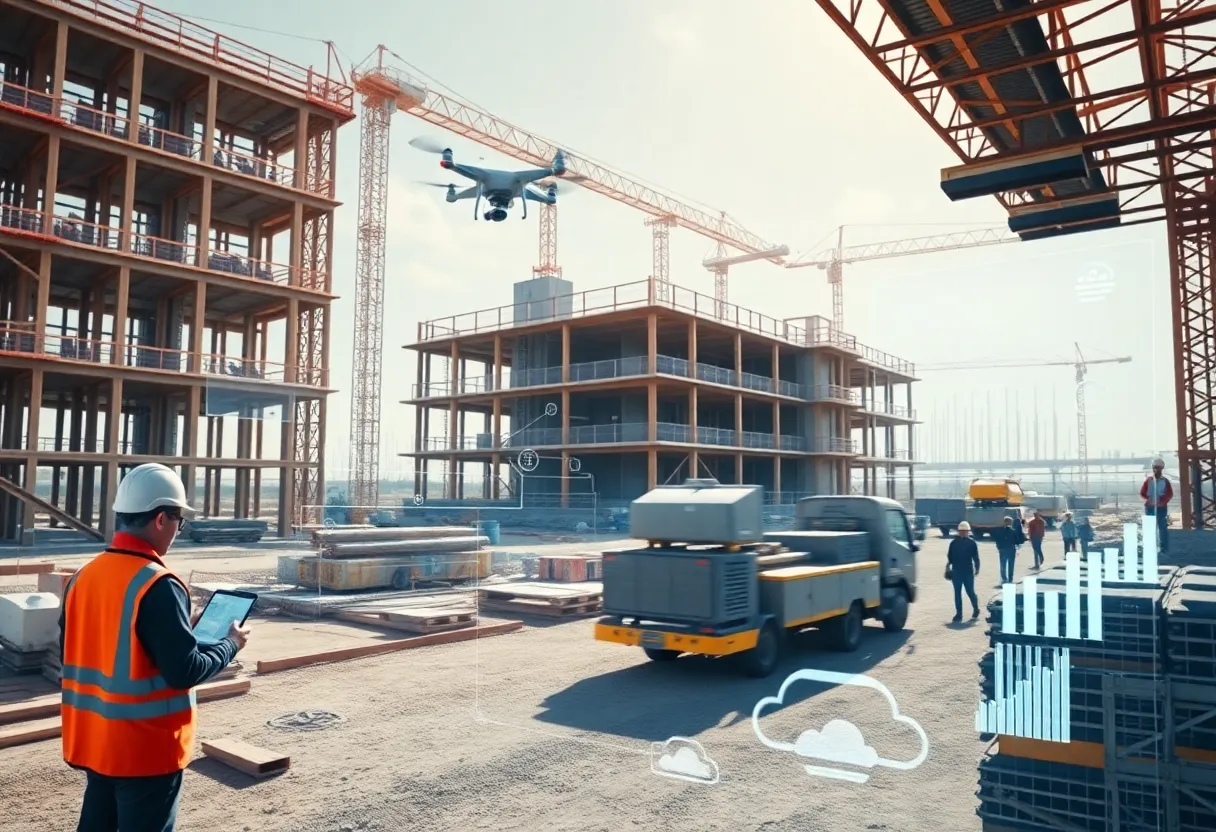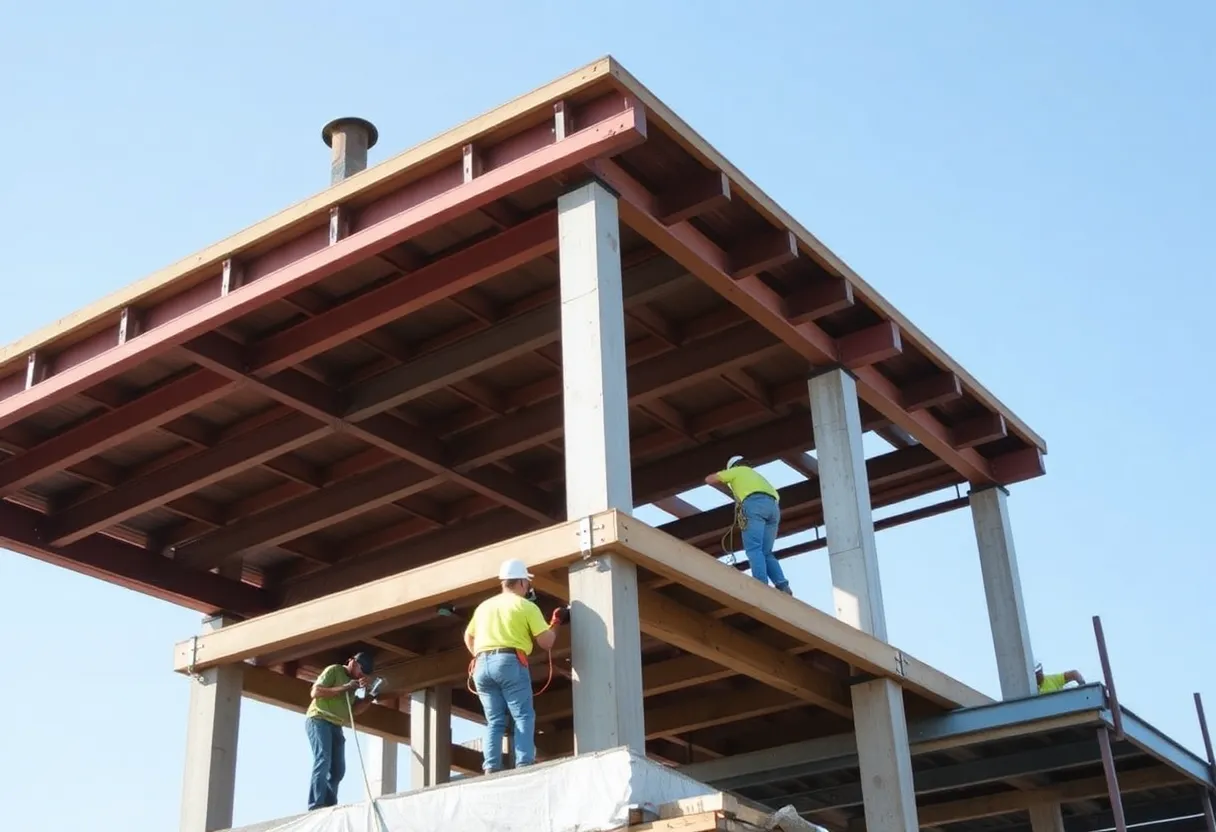Global, October 6, 2025
News Summary
A market forecast reveals rapid adoption of BIM, AI and IoT across architecture, engineering, construction and operations. BIM is evolving from visualization into a multi-dimensional platform that integrates scheduling, cost, sustainability and maintenance data while feeding from real-time IoT to create digital twins. Firms report faster clash resolution, reduced rework and improved collaboration, though interoperability costs, cultural change and training remain barriers. Examples show large reductions in change orders and materials waste. Vendors are consolidating around lifecycle platforms even as standards like ISO 19650 and openBIM work to close data gaps and improve long-term asset management.
Construction project software is reshaping how buildings are designed, built and run
A major market forecast titled Construction Project Management Software Market Size, Future Growth and Forecast 2033. highlights rapid adoption of BIM, artificial intelligence and IoT across architecture, engineering, construction and operations. The report links growing vendor activity and platform consolidation to expanding BIM capabilities while flagging persistent interoperability costs and cultural change as top barriers to faster results.
Top-line trends
Industry data show BIM is moving beyond visualization into an integrated, multi-dimensional platform. BIM now organizes design and construction data and addresses fragmentation and inefficiencies in the AECO industry by offering a shared, continually updated 3D model that acts as a single source of truth. BIM integrates scheduling, cost, sustainability and maintenance data as multi-dimensional BIM, and real-time IoT feeds into BIM digital twins to optimize operations, maintenance and sustainability while reducing lifecycle costs.
Why adoption is accelerating
The construction sector remains one of the least digitalized sectors of the economy, second only to agriculture and hunting. Digital tools promise measurable improvements: a Building Smart International survey found 77% of firms see a common data environment (such as BIM) as the best way to share large amounts of information. Two-thirds of firms say BIM is a faster way to resolve clashes and quality issues, facilitate collaboration, and improve understanding/visibility of design decisions.
Documented benefits and real projects
BIM coordination can generate reports and metrics automatically, reduce requests for information and cut redundant email traffic. BIM automates parts of the takeoff process for more accurate quantity takeoffs, improves preconstruction planning and reduces rework with features such as clash detection. A clash-detection example noted that engineers working on the China Zun Tower in Beijing reduced change orders by 80% compared to similar projects. Roche Tower 2 used a BIM digital twin built with Revit and BIM 360; the model monitored building systems and operations in real time. An adaptive reuse project completed in 2022 by BG&E used Autodesk ReCap Pro, Revit, BIM Collaborate Pro, BIM 360 and Navisworks for clash detection to salvage 70% of construction materials and save 12,000 tons of embodied carbon and 13 months of work.
Emerging tech around BIM
AI and machine learning are now embedded into BIM workflows to detect and predict safety risks, evaluate imagery for risk of delays or cost overruns, and automate bill of materials generation. Examples include AI product identification plug-ins that claim to reduce manual search time by 75%, and generative design integrated with Revit that can optimize for metrics such as rentable square feet, material usage and daylight. AR/VR and game-engine visualization tools are being combined with BIM for clearer stakeholder buy-in and on-site guidance.
Costs, ROI and the interoperability gap
Typical BIM start-up investments include hardware, software and training, plus customization and process change costs. Measuring BIM ROI remains difficult because many benefits are preventative and diffused. A NIST study found lack of interoperability in facilities management costs building owners $15.8 billion annually, equating to $0.23 per square foot per year. Interoperability problems persist across BIM and facilities management tools despite the growth of openBIM platforms and standardization such as ISO 19650 (evolving from UK Standard 1192).
Industry scale problems that digital tools aim to fix
According to McKinsey, large construction projects typically take 20% longer to finish and are 80% over budget on average. Construction-sector productivity has declined since the 1990s. AECO remains highly fragmented with regional and local firms producing largely bespoke projects, making standardization and shared digital practices especially valuable.
Implementation and change management
A recommended practical approach is to start BIM implementation on projects already underway rather than brand-new projects and to create a BIM Execution Plan (BEP) assembled by the entire team. BEPs should define roles, responsibilities, software platforms, deliverables, schedules, sharing parameters and milestones. Adoption requires cultural change, grassroots buy-in, role clarity and targeted training.
Security and long-term outlook
BIM security is an active concern. Existing security tools exist but are not fully adapted to BIM’s specific challenges. Encryption and blockchain show potential to address future risks. The long-term outlook presented in the market material suggests BIM may eventually become synonymous with design and construction processes as it embeds across phases and disciplines.
Software, vendors and corporate activity
Common BIM and CAD tools cited include Autodesk Revit, AutoCAD, Civil 3D, Navisworks, ReCap Pro, BIM Collaborate Pro, BIM 360 and Autodesk Construction IQ, alongside open platforms and game-engine visualization. Nemetschek Group is described as a forerunner covering lifecycle solutions and positions OPEN BIM as an approach to ensure transparency and longevity of data for built assets. The material lists Nemetschek corporate history, global offices and leadership roles and states several awards and recognitions attributed to the company. Autodesk article update date is listed as September 9, 2024. Content provenance includes a press/website footer: All content on this site: Copyright © 2025 Elsevier B.V., its licensors, and contributors.
What this means for project teams
Teams that pair BIM with IoT, AI and cloud collaboration can expect faster decisions, fewer clashes, better cost tracking and longer-term savings on operations. But to capture these benefits, teams must budget for technology and training, plan integration carefully, and address interoperability and security from the outset.
Frequently Asked Questions
What is the report title referenced?
Construction Project Management Software Market Size, Future Growth and Forecast 2033.
What content provenance includes a press/website footer?
All content on this site: Copyright © 2025 Elsevier B.V., its licensors, and contributors.
When was the Autodesk article update date shown?
September 9, 2024.
What did McKinsey say about large construction projects?
According to McKinsey, large construction projects typically take 20% longer to finish and are 80% over budget on average.
What did the Building Smart International survey find?
Building Smart International survey: 77% of firms see a common data environment (such as BIM) as the best way to share large amounts of information.
What did the NIST study find about interoperability costs?
NIST study (cited) found lack of interoperability in facilities management costs building owners $15.8 billion annually, equating to $0.23 per square foot per year.
Key features table
| Feature | What it does | Notes / Examples |
|---|---|---|
| BIM shared 3D model | Provides a single source of truth for design and construction data | Reduces RFIs and redundant emails; improves visualization and stakeholder buy-in |
| 4D/5D/6D/7D BIM | Adds time, cost, sustainability and operations data to the model | 4D: scheduling; 5D: cost; 6D: sustainability/carbon; 7D: maintenance and operations |
| Clash detection | Finds design conflicts early to reduce rework | China Zun Tower engineers reduced change orders by 80% vs similar projects |
| Digital twin + IoT | Monitors systems and operations in real time | Used for elevators diagnostics, energy and water consumption; Roche Tower 2 example |
| AI/ML tools | Detect and predict safety risks, automate takeoffs and assess imagery-based risk | Product ID plug-ins claim 75% time savings in material searches |
| Standards and interoperability | ISO 19650 and openBIM help unify data exchange | NIST estimates $15.8 billion annual interoperability cost to owners |
| Implementation guidance | Start with underway projects, create BEP, budget training | BIM adoption requires cultural change and role clarity |
Content provenance included in source material: All content on this site: Copyright © 2025 Elsevier B.V., its licensors, and contributors.
Deeper Dive: News & Info About This Topic
Additional Resources
- ScienceDirect: Article S0926580520310219
- Wikipedia: Building information modeling
- Autodesk: BIM — Building Information Modeling
- Google Search: BIM building information modeling
- Nemetschek Group: About Us
- Google Scholar: Nemetschek openBIM
- Indian Infrastructure: Building efficiency — Advanced technologies (Feb 5, 2025)
- Encyclopedia Britannica: Building information modeling
- Appinventiv: Digital transformation in construction
- Google News: BIM construction digital transformation
Author: Construction FL News
The FLORIDA STAFF WRITER represents the experienced team at constructionflnews.com, your go-to source for actionable local news and information in Florida and beyond. Specializing in "news you can use," we cover essential topics like product reviews for personal and business needs, local business directories, politics, real estate trends, neighborhood insights, and state news affecting the area—with deep expertise drawn from years of dedicated reporting and strong community input, including local press releases and business updates. We deliver top reporting on high-value events such as the Florida Build Expo, major infrastructure projects, and advancements in construction technology showcases. Our coverage extends to key organizations like the Associated Builders and Contractors of Florida and the Florida Home Builders Association, plus leading businesses in construction and legal services that power the local economy such as CMiC Global and Shutts & Bowen LLP. As part of the broader network, including constructioncanews.com, constructionnynews.com, and constructiontxnews.com, we provide comprehensive, credible insights into the dynamic construction landscape across multiple states.





